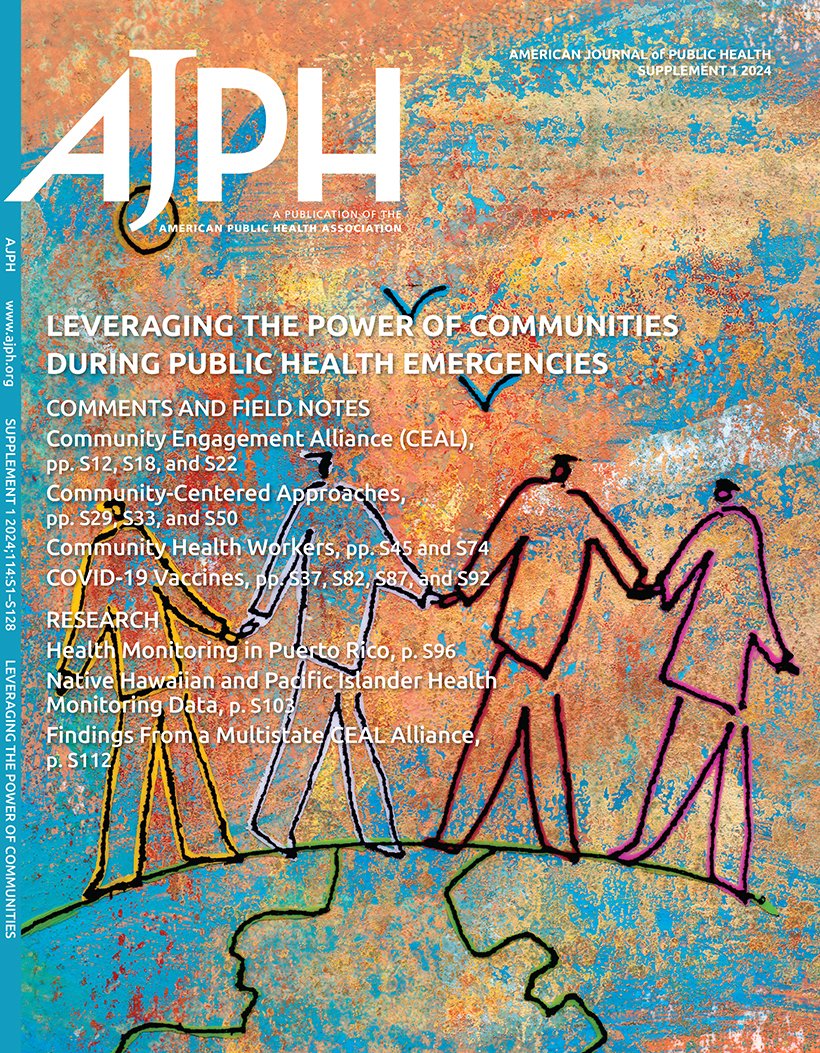2011年至2022年美国非裔美国人、黑人移民和西班牙裔黑人与其他种族/族裔婴儿母乳喂养率的差异
IF 9.6
1区 医学
Q1 PUBLIC, ENVIRONMENTAL & OCCUPATIONAL HEALTH
引用次数: 0
摘要
目标。比较美国黑人亚群和其他种族群体的母乳喂养起始(BFI)、母乳喂养持续时间和纯母乳喂养(EBF)。方法。我们分析了2011年至2022年出生的婴儿的全国儿童健康调查数据(n = 89067)。多变量广义线性模型确定了BFI、病程和EBF(6个月)的决定因素。结果。非裔美国人(即非西班牙裔美国黑人)的母乳喂养率明显低于其他种族/族裔群体;黑人移民的比率最高。非裔美国人(58.5%)和西班牙裔黑人(78.5%)的BFI显著低于非西班牙裔白人(84.1%),而黑人移民(88.8%)的BFI显著高于非西班牙裔白人(84.1%)。在那些开始的人中,非裔美国人和西班牙裔黑人的持续时间较低。结论。非裔美国人是唯一一个BFI率低于健康人群2020目标的群体;黑人移民高于目标。与非黑人的西班牙裔相比,西班牙裔黑人的发病率较低,这表明结构性和医学上的种族主义对健康行为的潜在影响。结果强调了在公共卫生实践和研究中区分黑人亚群的重要性。公共卫生。2025年9月4日提前在线发布:e1-e4。https://doi.org/10.2105/AJPH.2025.308242)。本文章由计算机程序翻译,如有差异,请以英文原文为准。
Differences in Breastfeeding Rates Among African Americans, Black Immigrants, and Hispanic Black Individuals Compared to Other Race/Ethnicity Groups for Infants Born Between 2011 and 2022, United States.
Objectives. To compare breastfeeding initiation (BFI), breastfeeding duration, and exclusive breastfeeding (EBF) of Black subgroups and other race groups in the United States. Methods. We analyzed National Survey of Child Health data for infants born between 2011 and 2022 (n = 89 067). Multivariable generalized linear models identified determinants of BFI, duration, and EBF (6 months). Results. African Americans (i.e., non-Hispanic Black Americans) had significantly lower breastfeeding rates compared with other race/ethnicity groups; Black immigrants had among the highest rates. BFI was significantly lower for African Americans (58.5%) and Hispanic Black (78.5%) individuals, and significantly higher for Black immigrants (88.8%) compared with non-Hispanic White persons (84.1%). Among those who initiated, African Americans and Hispanic Black individuals had lower duration rates. Conclusions. African Americans were the only group with BFI rates below the Healthy People 2020 goal; Black immigrants were above the goal. That Hispanic Black individuals had lower rates compared with Hispanic persons who are not Black suggests the potential impact of structural and medical racism on health behaviors. The results underscore the importance of differentiating Black subgroups in public health practice and research. (Am J Public Health. Published online ahead of print September 4, 2025:e1-e4. https://doi.org/10.2105/AJPH.2025.308242).
求助全文
通过发布文献求助,成功后即可免费获取论文全文。
去求助
来源期刊

American journal of public health
医学-公共卫生、环境卫生与职业卫生
CiteScore
9.50
自引率
3.90%
发文量
1109
审稿时长
2-4 weeks
期刊介绍:
The American Journal of Public Health (AJPH) is dedicated to publishing original work in research, research methods, and program evaluation within the field of public health. The journal's mission is to advance public health research, policy, practice, and education.
 求助内容:
求助内容: 应助结果提醒方式:
应助结果提醒方式:


